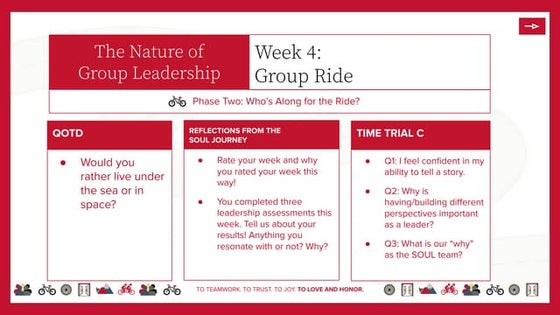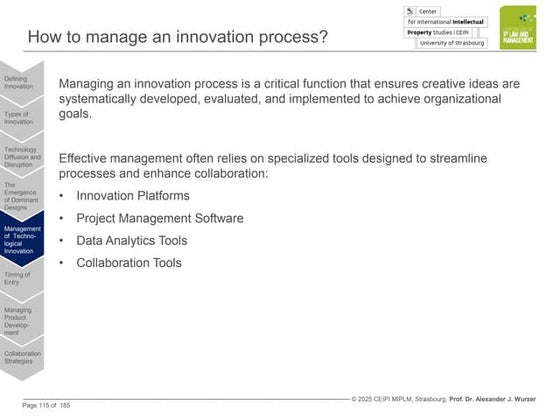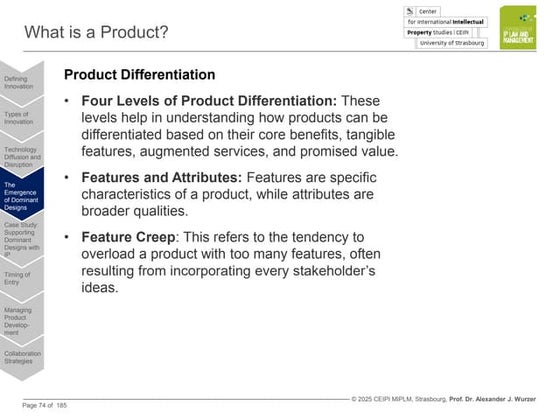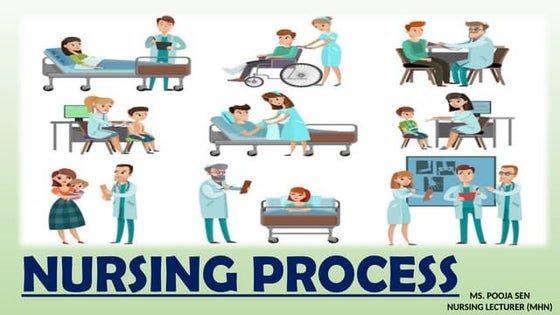Computational Analysis in an extended model of E. Coli
- 1. S T E V E N S TA D L E R | B L A N K L A B C O M P U TAT I O N A L A N A LY S I S I N A N E X T E N D E D STOICHIOMETRIC MODEL OF ESCHERICHIA COLI 1
- 2. ESCHERICHIA COLI E. COLI ŌĆó Rod-shaped bacterium ŌĆó Commonly found in the lower intestine of warm-blooded organisms ŌĆó Can be grown easily and inexpensively in a laboratory setting ŌĆó Investigated for over 60 years ŌĆó 5 metabolic reconstruction available 2
- 3. C U R R E N T M O S T D E TA I L E D M O D E L O F E . C O L I IJO1366 ŌĆó Published in 2011 from the systems biology research group in California under the supervision of Bernhard Palsson ŌĆó Contains 2251 reactions, 1136 unique metabolites, and 1366 genes. ŌĆó An update of iAF1260, to include biosynthetic pathways 3
- 4. A N U P D A T E O F I J O 1 3 6 6 W I T H V O L A T I L E M E TA B O L I T E S AN APPROACH TO ENHANCE A M O D E L W I T H D ATA B A S E K N O W L E D G E ŌĆó 3788 additional reactions ŌĆó Fetched from KEGG ŌĆó Addition of 194 volatile metabolites ŌĆó 124 were identifiable in KEGG ŌĆó Hit rate of 61% (118/194) ŌĆó 54% with standard reactions of KEGG 4
- 5. 5
- 6. FURTHER FOCUS OF THIS P R E S E N TAT I O N Explanation of the stoichiometric nature of iJO1366 Computational Analysis with FBA Querying of data to enhance iJO1366 Introduction of common pathway databases Integration of data into iJO1366 6
- 7. PA T H W A Y S T O D E S C R I B E C H E M I C A L P R O C E S S E S STOICHIOMETRY ŌĆó Branch of chemistry that deals with the relative quantities of reactants and products in chemical reactions. ŌĆó m x n matrix S with m metabolites and n reactions ŌĆó Starting from knowledge we have, we do: ŌĆó Spot all reactions ŌĆó Detect which metabolite is consumed and wich is produced Loss of informativeness!!! 7
- 8. FURTHER FOCUS OF THIS P R E S E N TAT I O N Explanation of the stoichiometric nature of iJO1366 Computational Analysis with FBA Querying of data to enhance iJO1366 Introduction of common pathway databases Integration of data into iJO1366 8
- 9. F L U X B A L A N C E A N A LY S I S FBA ŌĆó A mathematical approach for analyzing the flow of metabolites through a metabolic network 9
- 10. FURTHER FOCUS OF THIS P R E S E N TAT I O N Explanation of the stoichiometric nature of iJO1366 Computational Analysis with FBA Querying of data to enhance iJO1366 Introduction of common pathway databases Integration of data into iJO1366 10
- 11. T Y P I C A L D ATA M I N I N G I N F L U E N C E D WORKFLOW 11
- 12. D E V E L O P M E N T O F A N A P P L I C A T I O N T O E N H A N C E M O D E L S A U T O M A T I C A L LY H O W T O C O N S U LT A D ATA B A S E ŌĆó Typhoeus a RUBY GEM ŌĆó Runs HTTP requests in parallel while cleanly encapsulating handling logic ŌĆó Grab as many as possible ŌĆó Dynamic storage mechanism Hash Maps Instant accessing time 12
- 13. REST R E P R E S E N TAT I O N A L S TAT E T R A N S F E R ŌĆó Architectural principle of web-based applications defined by Roy Fielding in 2000 ŌĆó Influenced from HTTP ŌĆó The standard INTERNET protocol ! SERVICE DESCRIPTION AS URL GET R E Q U E S T A PA G E /GENES/ALL POST S E N D M U LT I P L E D ATA TO SERVER /GENES/NEW PUT UPLOAD A RESOURCE TO SERVER / G E N E S / THRA DELETE REMOVE RESOURCE / G E N E S / THRA / D E L E T E 13
- 14. FURTHER FOCUS OF THIS P R E S E N TAT I O N Explanation of the stoichiometric nature of iJO1366 Computational Analysis with FBA Querying of data to enhance iJO1366 Introduction of common pathway databases Integration of data into iJO1366 14
- 15. VISUALIZATION OF THE INNER STOICHIOMETRIC LIFE OF A CELL PAT H W AY D ATA B A S E S ŌĆó Visualizable as an acyclic, directed graph ŌĆó No cycles and every edge is directed ŌĆó A Pathway shows the transformation of a metabolic species to a an end product ŌĆó Enzyme catalyze a reaction ŌĆó Reaction transforms educts to products 15
- 16. O N O F T H E B I G G E S T PA T H W A Y D A TA B A S E S KEGG ŌĆó Kyoto Encyclopedia of Genes and Genomes (KEGG) ŌĆó Database resource for understanding high-level functions and utilities of the biological system ŌĆó Initiated in May 1995 it consists of 3 databases ŌĆó PATHWAY ŌĆó GENES ŌĆó LIGAND 16
- 17. AN EXAMPLE OF AN REACTION ENTRY KEGG 17
- 18. A PA R A G O N O F A R E S T F U L A P I KEGG API ŌĆó Application programming interface (API) ŌĆó Specifies how software components should interact with each other. 18
- 19. O N O F T H E B I G G E S T PA T H W A Y D A TA B A S E S KEGG ENTRY 19
- 20. F O C U S O F T H I S P R E S E N TAT I O N Explanation of the stoichiometric nature of iJO1366 Computational Analysis with FBA Querying of data to enhance iJO1366 Introduction of common pathway databases Integration of data into iJO1366 20
- 21. SEVERAL STEPS ARE NECESSARY TO AUTOMATIZE AN ENHANCEMENT PROCESS W O R K F L O W O F A N A P P L I C AT I O N T O ENHANCE MODELS ŌĆó Querying of additional data ŌĆó Storage of additional data ŌĆó Structured as objects for easier access ŌĆó Creation of a search tree with nodes as states ŌĆó Evaluate the worth of a possible enhancement 21
- 22. A C O M M O N PA R A D I G M I N T H E P R O G R A M M I N G C O M M U N I T Y O B J E C T- O R I E N T E D D ATA MANAGEMENT ŌĆó Every concept is a object ŌĆó With all its attributes Easier to iterate through, to get objects with certain attributes 22
- 23. INFLUENCED FROM HEURISTIC BASED A.I. TECHNIQUES S TAT E - B A S E D T H I N K I N G ŌĆó Every enhancement induces a new situation ŌĆó Additional metabolites ŌĆó Additional reactions ŌĆó Start with an metabolites as first state ŌĆó Expand it and his successors until a goal state is reached 23
- 24. EFFICIENT AND POWERFUL I T E R AT I V E D E E P E N I N G ŌĆó State space search strategy ŌĆó Depth-limited search is run repeatedly ŌĆó Increasing the depth limit with each iteration ŌĆó Stops at pre-defined depth d ŌĆó Depending on the task, the max depth has to be chosen 24
- 25. EFFICIENT AND POWERFUL I T E R AT I V E D E E P E N I N G ŌĆó State space search strategy ŌĆó Depth-limited search is run repeatedly ŌĆó Increasing the depth limit with each iteration ŌĆó Stops at pre-defined depth d 25
- 26. EFFICIENT AND POWERFUL I T E R AT I V E D E E P E N I N G ŌĆó State space search strategy ŌĆó Depth-limited search is run repeatedly ŌĆó Increasing the depth limit with each iteration ŌĆó Stops at pre-defined depth d 26
- 27. EFFICIENT AND POWERFUL I T E R AT I V E D E E P E N I N G ŌĆó State space search strategy ŌĆó Depth-limited search is run repeatedly ŌĆó Increasing the depth limit with each iteration ŌĆó Stops at pre-defined depth d 27
- 28. EFFICIENT AND POWERFUL I T E R AT I V E D E E P E N I N G ŌĆó State space search strategy ŌĆó Depth-limited search is run repeatedly ŌĆó Increasing the depth limit with each iteration ŌĆó Stops at pre-defined depth d 28
- 29. EFFICIENT AND POWERFUL I T E R AT I V E D E E P E N I N G ŌĆó State space search strategy ŌĆó Depth-limited search is run repeatedly ŌĆó Increasing the depth limit with each iteration ŌĆó Stops at pre-defined depth d 29
- 30. EFFICIENT AND POWERFUL I T E R AT I V E D E E P E N I N G ŌĆó State space search strategy ŌĆó Depth-limited search is run repeatedly ŌĆó Increasing the depth limit with each iteration ŌĆó Stops at pre-defined depth d 30
- 31. EFFICIENT AND POWERFUL I T E R AT I V E D E E P E N I N G ŌĆó State space search strategy ŌĆó Depth-limited search is run repeatedly ŌĆó Increasing the depth limit with each iteration ŌĆó Stops at pre-defined depth d 31
- 32. O N E O F T H E H A R D E S T P R O B L E M S I N S TA T E B A S E D A P P R O A C H E S S TAT E E X P L O S I O N ŌĆó Number of states grow rapidly ŌĆó Exponential d # S TAT E S # S TAT E S (REACTIONS REVERSIBLE) Reactions focused on E. Coli 2 241 4 3651 54241 6 205360 1,2 X 10^7 8 32 65 12 X 10^6 2,8 X 10^9
- 33. S E V E R A L A P P R O A C H E S T O H A N D L E A B I G S TA T E S PA C E M A N A G I N G T H E S E A R C H S PA C E ŌĆó Pruning of the search space ŌĆó Remove unworthy nodes ŌĆó Pre-ordering of the search state ŌĆó Expand worthy states first ŌĆó Depending on the implemented heuristic 33
- 34. A S TA T I S T I C A B O U T T H E A V E R A G E N U M B E R O F N E W E D I C T S A F T E R A N S TA T E E X PA N S I O N M A N A G I N G T H E S E A R C H S PA C E AV E R A G E N U M B E R O F N E W E D U C T S Depth 2 1 Depth 3 Depth 4 0,75 0,5 0,25 0 C00207 C00014 C00180 C16521 34 C00409 C02223 C00146 C01879
- 35. IS IT WORTH TO GO DEEPER? M A N A G I N G T H E S E A R C H S PA C E R AT I O N B E T W E E N S O L U T I O N S A N D S TAT E S Depth 2 1 Depth 3 Depth 4 0,75 0,5 0,25 0 C00207 C00014 C00180 C16521 35 C00409 C02223 C00146 C01879
- 36. F A C I N G I N C O N S I S T E N C Y W E H A V E T O I N T E G R A T E T H E D A TA I N T E G R AT I N G N E W D ATA ŌĆó Fetched data has to be normalized ŌĆó Use regular expressions to grab necessary data ŌĆó Transform data to current standard ŌĆó Be aware of inconsistency ŌĆó Missing information has to be estimate ŌĆó Is it worth to estimate? ŌĆó Use data you already have 36
- 37. P O I N T S W H I C H S T I L L H A V E T O B E S O LV E D P R O B L E M S T O S O LV E ŌĆó Application is specialized to iJO1366 ŌĆó Find normalization methods ŌĆó Queries depend on restful web services ŌĆó Develop wrapper methods ŌĆó Application is constrained on E. Coli reactions only ŌĆó Find solutions to handle state explosions ŌĆó Evaluate states concerning biological aspects 37
- 38. SUGGESTIONS FOR THE FURTHER WORK OUTLOOK ŌĆó More and more web services become restful ŌĆó Easier to develop web crawler to fetch new data ŌĆó A standardization of data should be developed ŌĆó KEGG is a proper example of standardization and easy APIs ŌĆó Future network reconstructions are already very complex Collaboration of programmers with biologists to develop applications for an easier work with metabolic models 38
- 40. REFERENCES ŌĆó Pictures adapted from ŌĆó Jan Schellenberger, Richard Que, Ronan M T Fleming, Ines Thiele, Jeffrey D Orth, Adam M Feist, Daniel C Zielinski, Aarash Bordbar, Nathan E Lewis, Sorena Rah- manian, Joseph Kang, Daniel R Hyduke, and Bernhard O Palsson. Quantitative prediction of cellular metabolism with constraint-based models: the cobra toolbox v2.0. Nat. Protocols, 6(9):1290ŌĆō 1307, 09 2011. ŌĆó Jong Min Lee, Erwin P. Gianchandani, and Jason A. Papin. Flux ! balance analysis in the era of metabolomics. Brie’¼üngs in Bioinformatics, 7(2):140ŌĆō150, 2006. doi: 10.1093/bib/bbl007. 40
- 41. ŌĆ×Questions?ŌĆ£ ŌĆō S T E V E N S TA D L E R 41

























































































